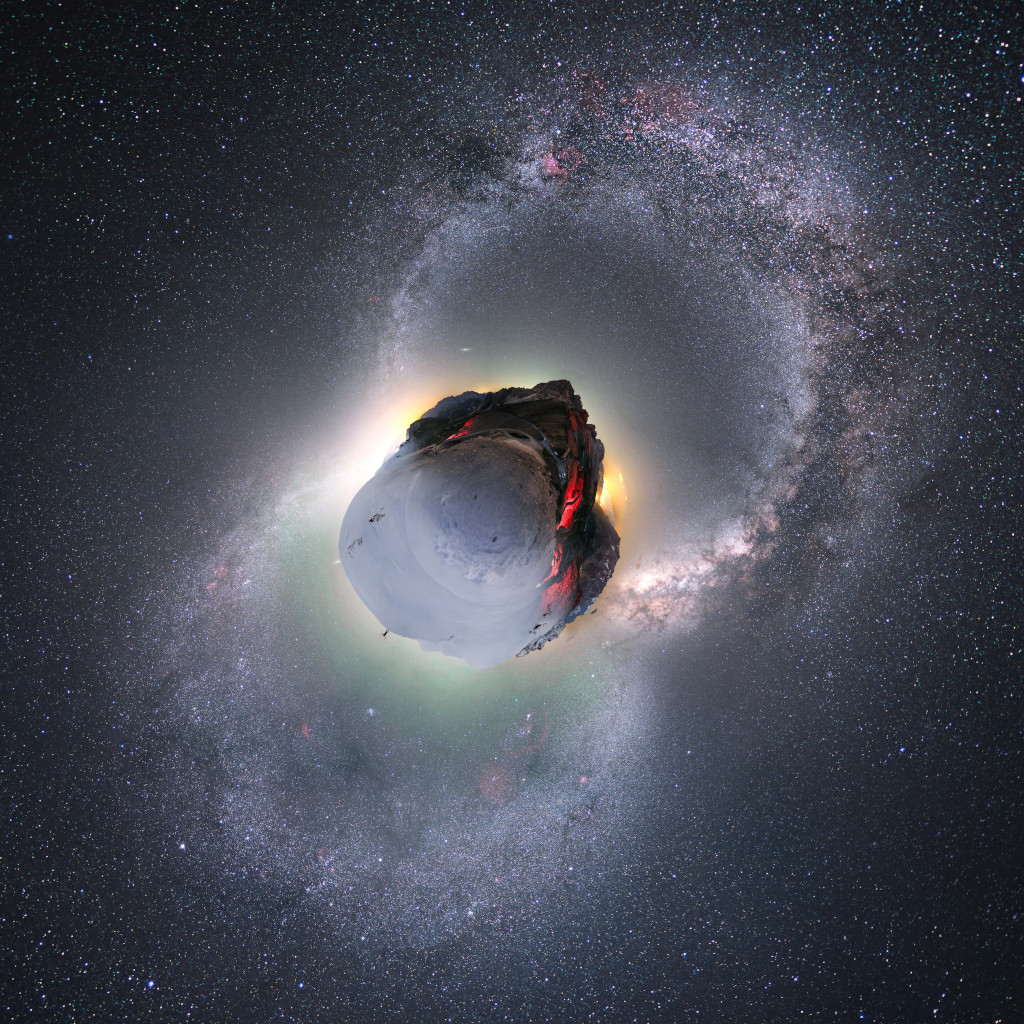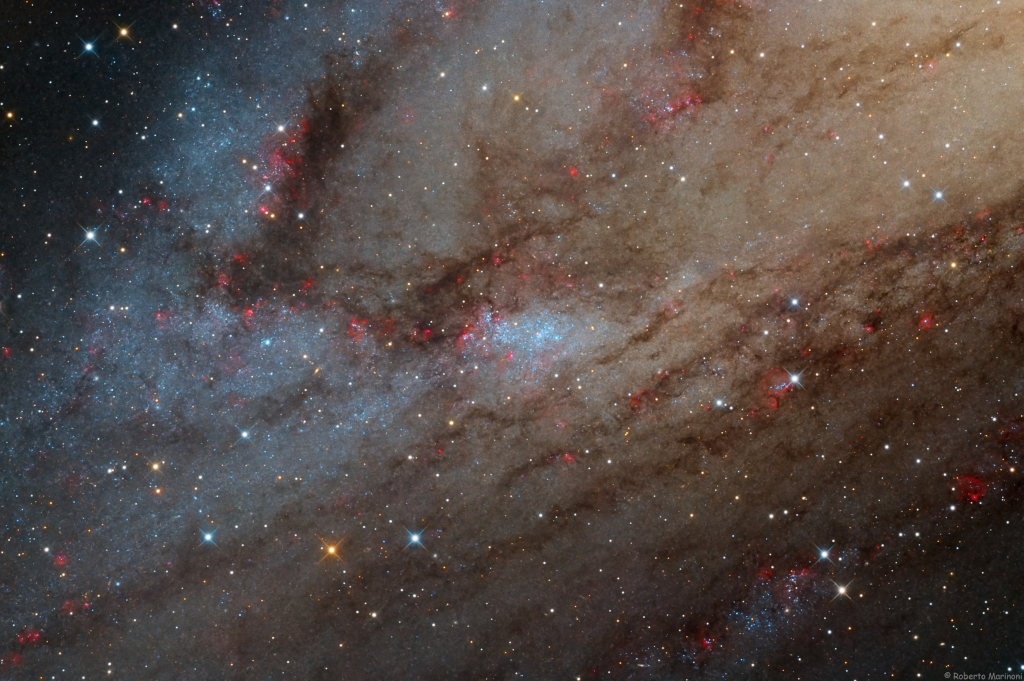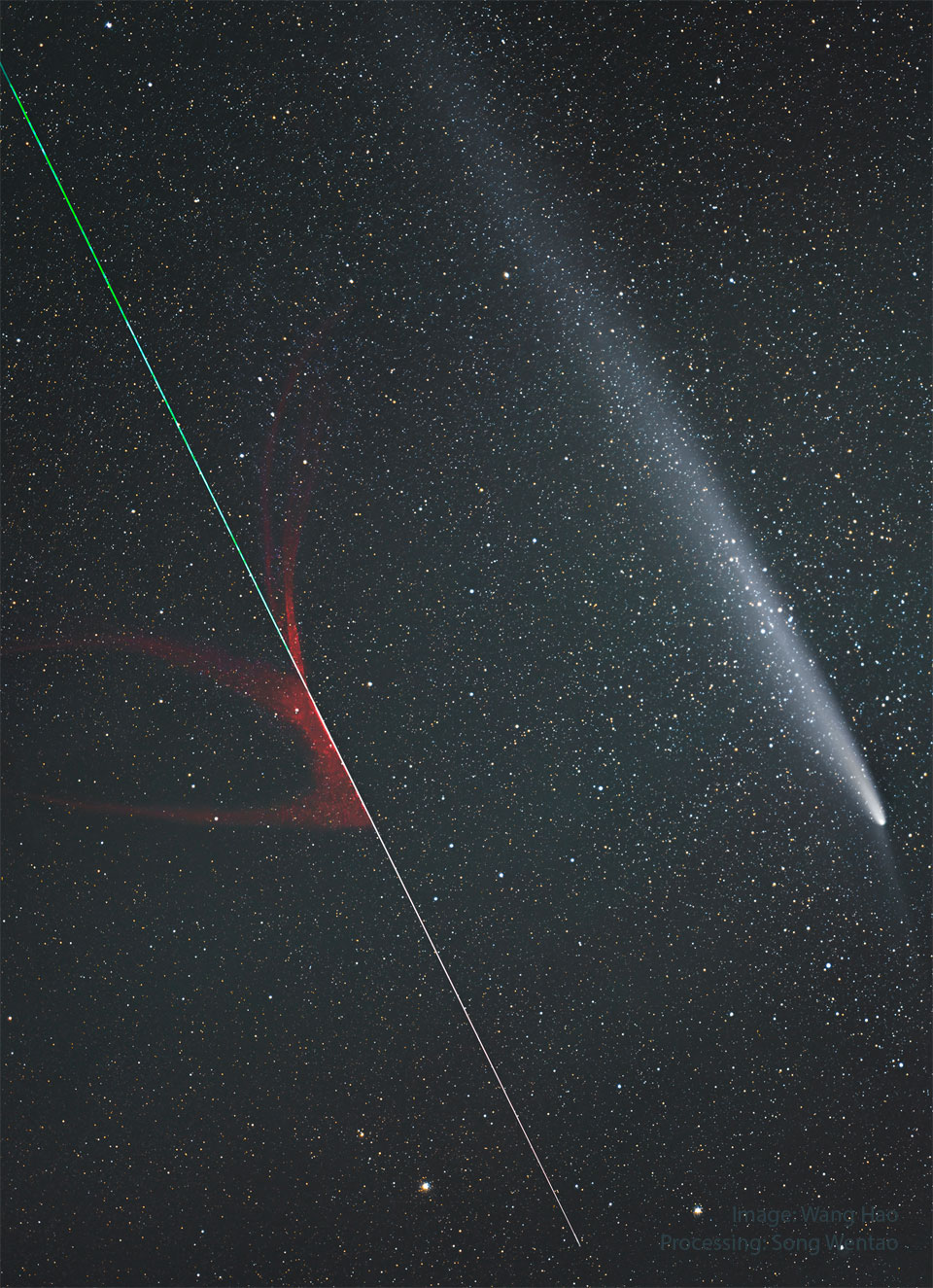Nombre total de pages vues
30/11/2024
ASTRONOMY - Winter and Summer on a Little Planet
2024 November 30
Image Credit & Copyright: Camille Niel
Explanation: Winter and summer appear to come on a single night to this stunning little planet. It's planet Earth of course. The digitally mapped, nadir centered panorama covers 360x180 degrees and is composed of frames recorded during January and July from the Col du Galibier in the French Alps. Stars and nebulae of the northern winter (bottom) and summer Milky Way form the complete arcs traversing the rugged, curved horizon. Cars driving along on the road during a summer night illuminate the 2,642 meter high mountain pass, but snow makes access difficult during winter months except by serious ski touring. Cycling fans will recognize the Col du Galibier as one of the most famous climbs in planet Earth's Tour de France.
29/11/2024
ASTRONOMIE - La Voie Lactée au Cervin - Suisse
ASTRONOMY - Messier 4
2024 November 29
Image Credit & Copyright: Steve Crouch
Explanation: Messier 4 can be found west of bright red-giant star Antares, alpha star of the constellation Scorpius. M4 itself is only just visible from dark sky locations, even though the globular cluster of 100,000 stars or so is a mere 5,500 light-years away. Still, its proximity to prying telescopic eyes makes it a prime target for astronomical explorations. Recent studies have included Hubble observations of M4's pulsating cepheid variable stars, cooling white dwarf stars, and ancient, pulsar orbiting exoplanet PSR B1620-26 b. This sharp image was captured with a small telescope on planet Earth. At M4's estimated distance it spans about 50 light-years across the core of the globular star cluster.
28/11/2024
METEOROLOGIE - Vagues nuageuses en Republique Tchèque
ASTRONOMY - NGC 206 and the Star Clouds of Andromeda
2024 November 28
Image Credit & Copyright: Roberto Marinoni
Explanation: The large stellar association cataloged as NGC 206 is nestled within the dusty arms of the neighboring Andromeda galaxy along with the galaxy's pinkish star-forming regions. Also known as M31, the spiral galaxy is a mere 2.5 million light-years away. NGC 206 is found at the center of this sharp and detailed close-up of the southwestern extent of Andromeda's disk. The bright, blue stars of NGC 206 indicate its youth. In fact, its youngest massive stars are less than 10 million years old. Much larger than the open or galactic clusters of young stars in the disk of our Milky Way galaxy, NGC 206 spans about 4,000 light-years. That's comparable in size to the giant stellar nurseries NGC 604 in nearby spiral M33 and the Tarantula Nebula in the Large Magellanic Cloud.
27/11/2024
METEOROLOGIE - Arcus sur l'île de Pag en Croatie.
ASTRONOMY - The Meteor and the Comet
2024 November 27
Image Credit & Copyright: Wang Hao; Processing: Song Wentao
Explanation: How different are these two streaks? The streak on the upper right is Comet Tsuchinshan-Atlas showing an impressive dust tail. The comet is a large and dirty iceberg that entered the inner Solar System and is shedding gas and dust as it is warmed by the Sun's light. The streak on the lower left is a meteor showing an impressive evaporation trail. The meteor is a small and cold rock that entered the Earth's atmosphere and is shedding gas and dust as it is warmed by molecular collisions. The meteor was likely once part of a comet or asteroid -- perhaps later composing part of its tail. The meteor was gone in a flash and was only caught by coincidence during a series of exposures documenting the comet's long tail. The featured image was captured just over a month ago from Sichuan Province in China.
26/11/2024
METEOROLOGIE - Une tornade monstrueuse
METEOROLOGIE - Arc-en-ciel vaporeux en Antarctique
ASTRONOMY - Orion and the Ocean of Storms
2025 December 13 Orion and the Ocean of Storms Image Credit: NASA , Artemis 1 Explanation: On December 5, 2022, a camera on board the u...

-
2022 September 26 All the Water on Planet Earth Illustration Credit: Jack Cook, Adam Nieman, Woods Hole Oceanographic Institution ; Data ...
-
2025 May 11 The Surface of Venus from Venera 14 Image Credit: Soviet Planetary Exploration Program , Venera 14 ; Processing & Copyri...








